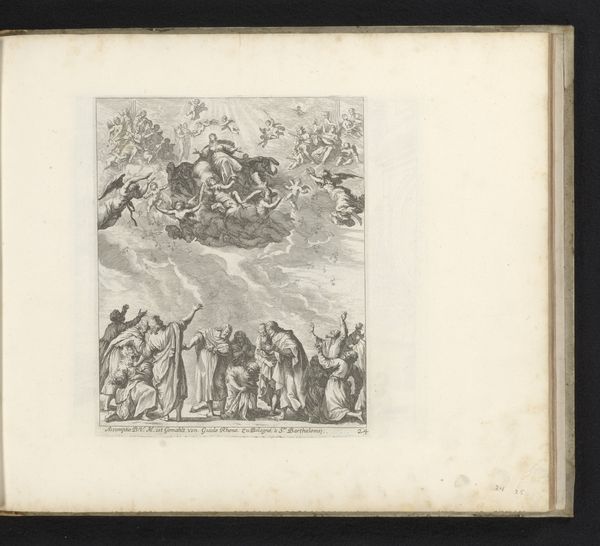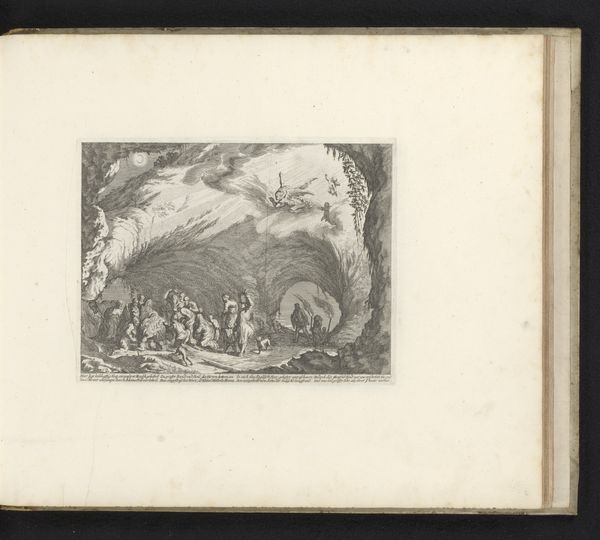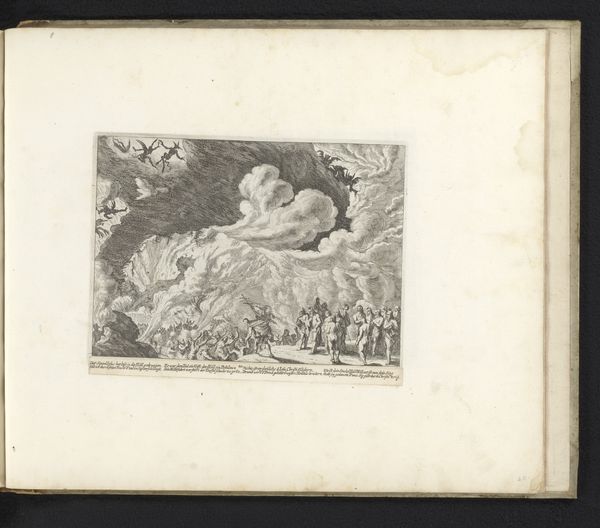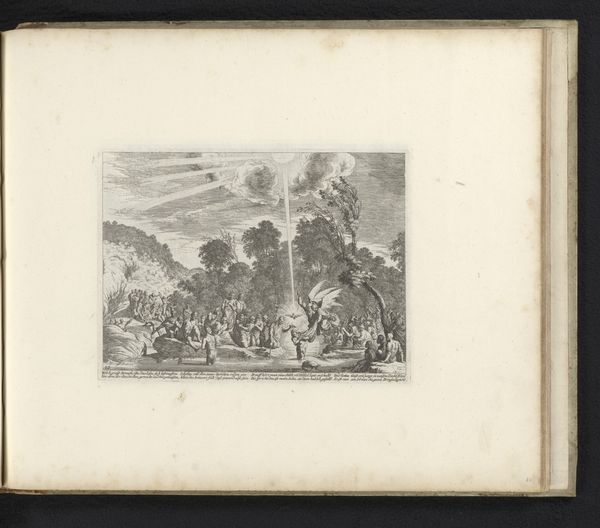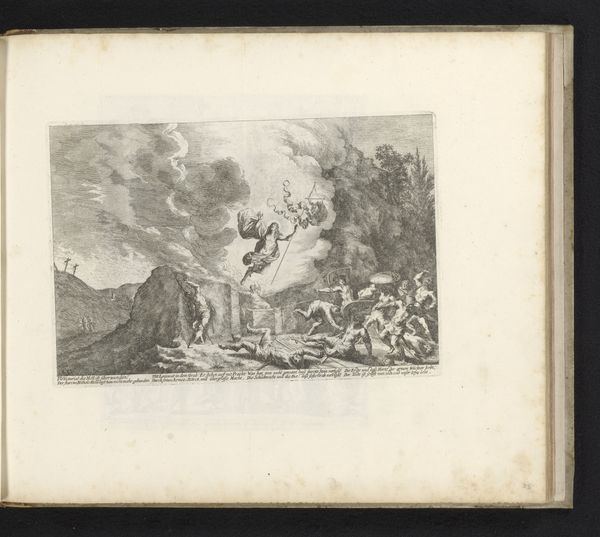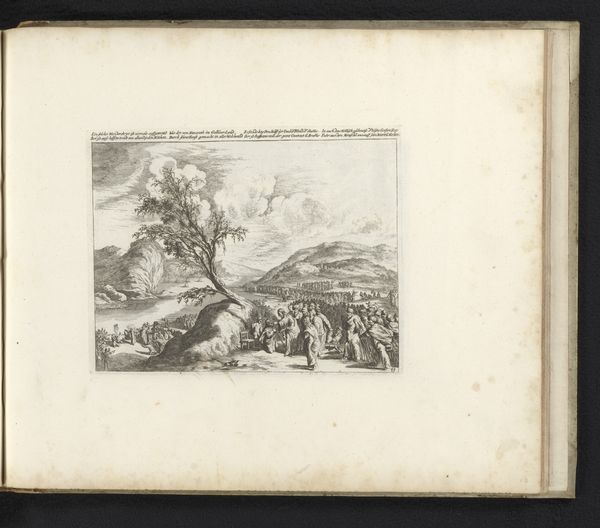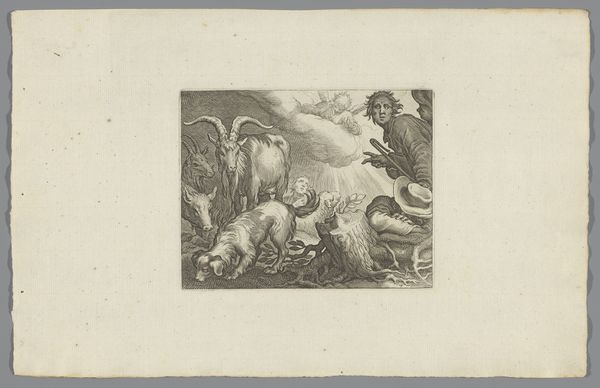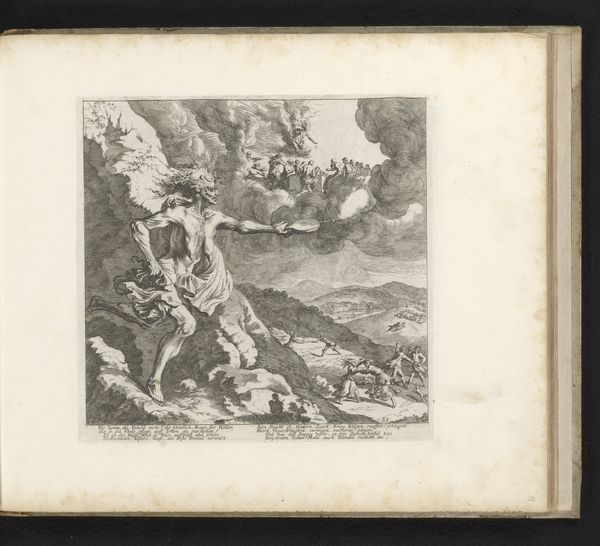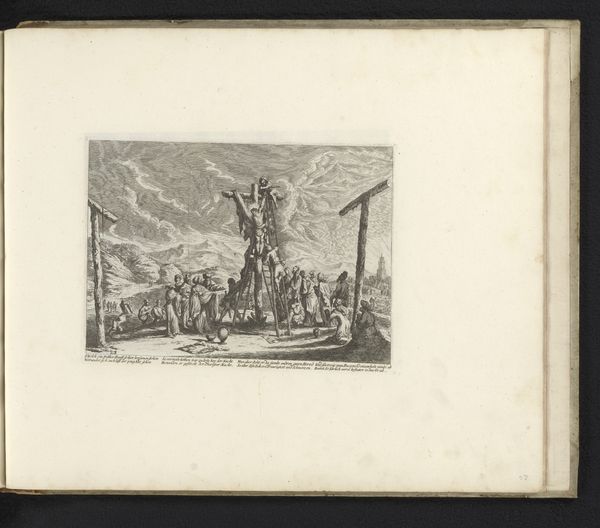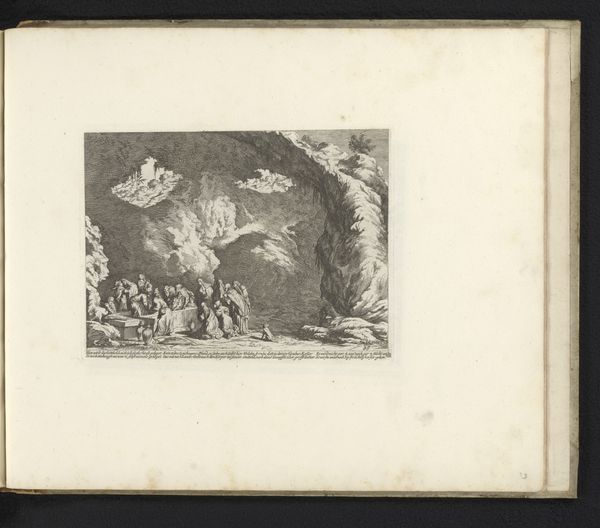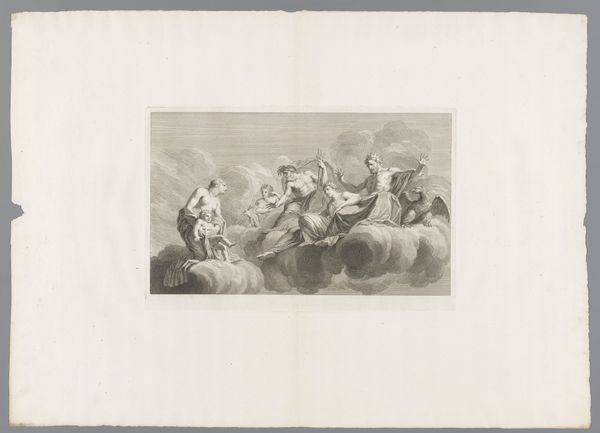
print, engraving
#
baroque
# print
#
figuration
#
line
#
history-painting
#
engraving
Dimensions: height 157 mm, width 208 mm
Copyright: Rijks Museum: Open Domain
Editor: Here we have Melchior Küsel's "Transfiguratie," created between 1670 and 1682. It's an engraving, a type of print. It has this dramatic, heavenly scene going on, but something about the crisp lines keeps it grounded. What's your take? Curator: Well, darling, it’s like stepping into a dream etched in steel. You see that burst of light? It's almost a stage spotlight, isn't it? The Baroque period just loved that kind of drama. The whole composition just *pops* out of the page because of it! Makes you wonder, what was Küsel thinking as he made each line? What's the story here? Editor: Right! It is from the Bible, isn't it? Jesus's transfiguration with the prophets. Curator: Exactly. A divine reveal, a holy sneak peek. See how those figures at the bottom recoil? Like they've seen something utterly, beautifully terrifying? And Küsel chose to show it with lines! It's an interesting choice... it's there's kind of detached feeling... Editor: That makes sense! It's like, divinity filtered through human understanding and… engraving skill! Did prints like these have a purpose beyond art? Curator: Oh, absolutely! Prints made art accessible. Imagine not being able to afford a huge oil painting of a transfiguration! Now the common person had the divine in their living room...or wherever they chose to nail it up! They weren’t mere decoration—they were visual sermons! Editor: That really shifts my perspective on it! Now, I see not just an artwork, but a powerful medium with a really distinct viewpoint! Curator: Precisely, my dear! Art's not just what you see, but where it takes you! Always keep looking!
Comments
No comments
Be the first to comment and join the conversation on the ultimate creative platform.
